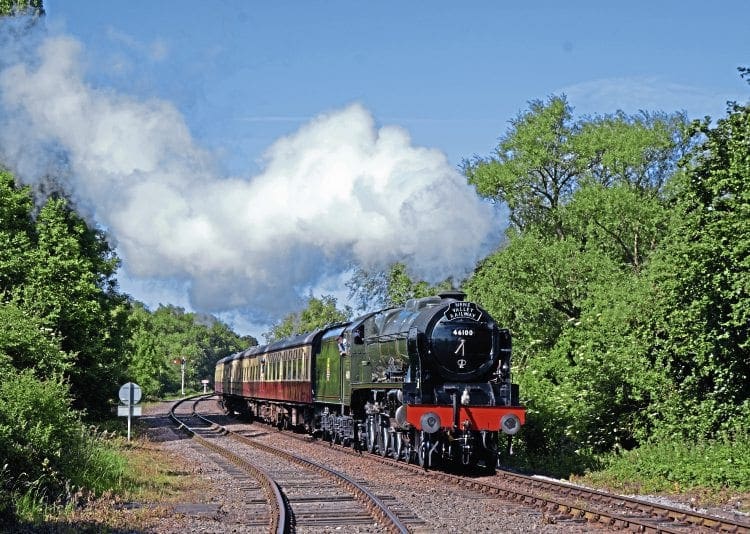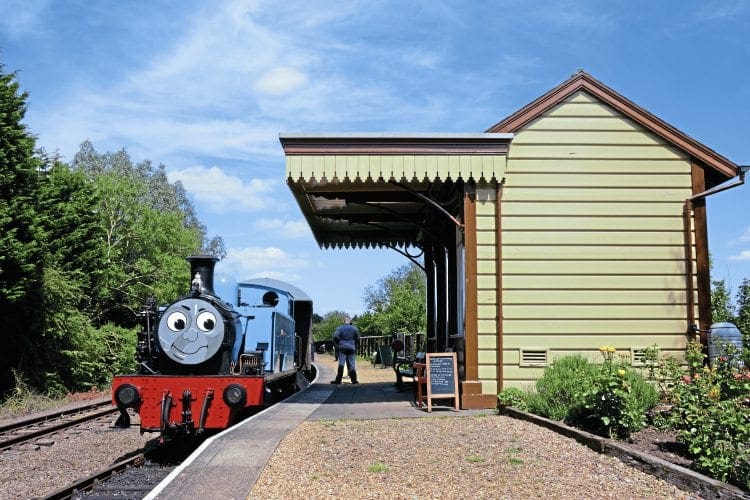This year sees a number of significant anniversaries being celebrated.
Brian Sharpe recounts the story of one of Britain’s heritage lines which has now been running trains for 40 years.
The Nene Valley Railway has its origins in the boom in new preserved steam railway schemes in the 1960s but in this case the line was not in itself a prime candidate for reopening, and it came about through a variety of unique circumstances and developed in a very different way to its contemporaries.

past Longueville Junction on June 4. The line in the foreground is
the Fletton branch leading to the ECML at Fletton Junction. This
short section of line from this point to Orton Mere has been relaid
twice by NVR volunteers in the last 45 years. BRIAN SHARPE
The London & Birmingham Railway built what was to become the southern end of the West Coast Main Line out of Euston. As part of the LBR’s expansion, a branch was opened by the company from Blisworth on the WCML to Peterborough in 1845, under the name of the Northampton & Peterborough Railway. This line briefly formed Peterborough’s first rail link with the capital, taking the long way round to Euston via Northampton until superseded by the GNR line from King’s Cross which opened in 1850.
The LBR made an end-on connection with the Eastern Counties Railway from East Anglia and used the ECR’s Peterborough station in exchange for the ECR having running powers from there to Blisworth, giving it access to the north of England – an even longer way round! In 1846 though, the LBR merged with the Grand Junction Railway and the Manchester & Birmingham Railway to form the London & North Western Railway.
Enjoy more Heritage Railway reading in the four-weekly magazine.
Click here to subscribe & save.
In 1852, the GNR completed its direct route north of Peterborough to Doncaster forming the company’s section of the East Coast Main Line to Edinburgh, and the LNWR line along the valley of the River Nene declined in importance. The GNR crossed over the LNWR at right angles and no direct connection was ever built between the two. The Eastern Counties Railway became part of the Great Eastern Railway in 1862.

The Midland Railway however, ended up with a line from Leicester to Peterborough by quite a circuitous route through Melton Mowbray, Oakham and Stamford. It ran alongside the GNR for several miles but rather than using the GNR station or even building one alongside it, it joined the LNWR route and its trains used Peterborough East.
The LNWR expanded steadily and on November 1, 1879, built a line from Rugby through Market Harborough which joined the Northampton to Peterborough line at Yarwell Junction, west of Wansford, giving routes from Peterborough to both Northampton and to Rugby, the latter now becoming the more important route as it formed the main rail link from Birmingham to East Anglia.
Read more in Issue 230 of HR – on sale now!
Advert
 Enjoy more Heritage Railway reading in the four-weekly magazine. Click here to subscribe.
Enjoy more Heritage Railway reading in the four-weekly magazine. Click here to subscribe.




